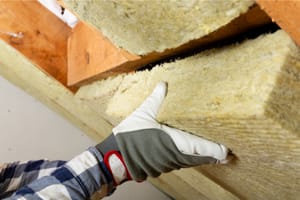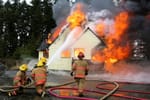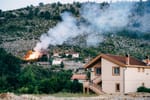As wildfires continue to pose a significant risk to communities across the world, understanding how to protect yourself and your loved ones is crucial.
The increasing frequency and intensity of these devastating events highlight the need for preparedness and awareness.
By taking proactive steps and having a solid safety plan in place, you can greatly enhance your chances of staying safe during a wildfire emergency.
Here are ten essential strategies you should consider to ensure your safety and that of your family during such critical situations.
1)) Stay Informed
Make sure to stay updated on the latest wildfire information by following local news outlets, official social media accounts, and emergency alerts.
Knowing where wildfires are burning and which areas are at risk can help you make informed decisions about evacuating or sheltering in place.
2)) Create A Defensible Space
Clear vegetation and other flammable materials from around your home to create a defensible space that can help prevent wildfires from spreading to your property.
This includes trimming trees, removing dead plants, and storing firewood at least 30 feet away from your home.
3)) Have An Evacuation Plan
In case of a wildfire evacuation order, have a plan in place for how you will safely leave your home and get to a designated evacuation center.
Make sure all family members know the plan and have essential items like medications, important documents, and food/water ready to go.
Tips for Creating an Effective Evacuation Plan:
- Establish Multiple Routes: Identify several routes to your evacuation center in case certain roads are blocked or unsafe. Familiarize yourself with these paths ahead of time, and consider potential alternatives in case of emergencies.
- Pack an Emergency Kit: Prepare a portable emergency kit containing essential supplies such as water, non-perishable food items, flashlights, a first aid kit, and necessary medications. Keep this kit in an easily accessible location so you can grab it quickly.
- Communicate and Practice Your Plan: Ensure all family members are aware of the evacuation plan and conduct regular practice drills. This will help everyone feel more confident and ready in the event of an actual emergency, reducing panic and confusion. By following these tips, you can increase your chances of safely evacuating during a wildfire situation. Remember to always follow evacuation orders and stay updated on changing conditions.
Having a well-thought-out evacuation plan is vital for ensuring the safety of you and your loved ones during a wildfire.
By staying informed, establishing multiple escape routes, packing an emergency kit, and regularly practicing your plan, you can significantly reduce the stress and confusion that may arise during an emergency.
Preparedness is key, and taking these steps can make all the difference when every second counts. Stay vigilant and prioritize your safety above all else.
4)) Pack An Emergency Kit
Prepare an emergency kit with essentials like first aid supplies, non-perishable food, water, flashlights, batteries, a portable phone charger, and any necessary medications.
Keep this kit in an easily accessible location so you can grab it quickly if needed.
5)) Stay Indoors When Air Quality Is Poor
Wildfire smoke can pose serious health risks, especially for those with respiratory conditions or other health issues.
When air quality is poor due to nearby wildfires, it's best to stay indoors with windows closed and use air purifiers if available.
6)) Avoid Outdoor Activities
During a wildfire event, it's important to avoid outdoor activities that could put you at risk of exposure to smoke or flames.
This includes hiking, camping, or other recreational activities in areas close to active wildfires.
Pro Tip: Invest in a High-Quality Air Humidifier:
Investing in a high-quality air humidifier can greatly enhance indoor air quality during wildfire events.
Wildfire smoke often leads to dry air, which can exacerbate respiratory problems and irritate the throat and eyes.
A humidifier helps maintain optimal humidity levels, alleviating discomfort caused by dry air and reducing the potential for respiratory issues.
By adding moisture to the air, a humidifier can assist in trapping airborne particles, including smoke and allergens, making it easier to breathe.
Prioritizing air quality through effective humidity control can contribute significantly to your overall well-being during such challenging situations.
7)) Follow Evacuation Orders
If authorities issue an evacuation order for your area, you must follow their instructions promptly and evacuate as directed.
Ignoring evacuation orders puts not only yourself but also first responders at risk.
8)) Stay Connected With Loved Ones
Make sure you have a way to communicate with family members or friends during a wildfire emergency.
Establish meeting points or check-in times so everyone knows each other's whereabouts and safety status.
Tips for Staying Connected With Loved Ones:
- Set Up Group Messaging: Create a group chat on a messaging platform that everyone can access. This will facilitate quick updates and ensure that important information is shared immediately, keeping everyone informed about safety and whereabouts.
- Designate a Family Liaison: Choose one person to act as the main point of contact for the family. This individual can relay information between family members, reducing confusion and ensuring everyone receives consistent updates.
- Utilize Social Media: Use social media platforms to check in and share updates with family and friends. Posting your location and well-being can help keep your support network informed and provide peace of mind during emergencies.
Staying connected with loved ones during a wildfire emergency is essential for maintaining a sense of security and support.
By implementing strategies such as group messaging, designating a family liaison, and utilizing social media, you can ensure that everyone remains informed and connected despite the chaos that may unfold.
Effective communication allows for the quick sharing of crucial information and can significantly reduce anxiety, fostering a collective sense of safety and readiness during challenging times.
Prioritizing these connections can make a substantial difference when it comes to managing emergencies collaboratively.
9)) Protect Your Pets
Don't forget about your furry friends during a wildfire event! Have pet carriers ready for easy transport if needed and pack extra food/water for them in your emergency kit.
Tips for Protecting Your Pets During Wildfires:
- Create an Emergency Pet Kit: Assemble a pet emergency kit that includes food, water, dishes, leashes, first aid supplies, and any necessary medications. Make sure it's easily accessible for a quick grab if evacuation is needed.
- Keep Identification Up-to-Date: Ensure that your pets have proper identification, such as collars with tags containing your contact information, and consider microchipping for additional security.
- Plan for Transportation: Have pet carriers ready for each pet to facilitate safe and swift transport. Familiarize your pets with the carriers to reduce their stress during an emergency.
- Designate a Safe Space: Identify a safe indoor area in your home where your pets can stay calm during wildfires. This space should be away from windows and well-ventilated but shielded from smoke.
- Stay Informed About Pet-Friendly Shelters: Research and keep a list of pet-friendly shelters and hotels in advance, so you have options for safe accommodation if you must evacuate.
Protecting your pets during a wildfire is a crucial aspect of emergency preparedness.
By taking proactive steps, such as assembling an emergency kit, ensuring proper identification, and planning for transportation, you can significantly enhance their safety and comfort.
Creating a designated safe space in your home and knowing where pet-friendly shelters are located can provide peace of mind during chaotic situations.
Prioritizing your pets' well-being not only helps them navigate stressful circumstances but also strengthens the bond between you and your furry companions during challenging times.
10)) Be Prepared For Power Outages
Wildfires can cause power outages that may last for days or even weeks in some cases.
Have backup power sources like generators or solar chargers available so you can still communicate with others and access essential services during an outage.
Tools for Preparing for Power Outages:
- Portable Generator: Invest in a reliable portable generator to provide temporary power for essential appliances like refrigerators or medical devices during extended outages.
- Battery-Powered Flashlights: Keep several battery-powered or rechargeable flashlights on hand to ensure you have reliable lighting without relying on electricity.
- Emergency Radio: A battery-operated or hand-crank emergency radio can help you stay informed about weather updates and emergency alerts even when the power is out.
- Power Banks: Charge and store power banks in advance to keep your mobile devices powered, allowing you to stay connected and informed.
- Walkie-Talkies: These two-way radios can effectively communicate during power outages, especially in areas where cell service may be compromised. Having a pair of walkie-talkies allows you to maintain contact with family members or emergency responders over short distances without needing electricity or cellular networks. Consider selecting models with a longer battery life and a sufficient range to suit your needs.
Being adequately prepared for power outages can significantly improve your ability to manage emergencies during wildfires.
By investing in essential tools such as portable generators, battery-powered flashlights, emergency radios, and power banks, you create a safety net that ensures continued access to vital information and support.
These preparations not only enhance your comfort but also empower you to respond effectively in challenging situations, ensuring that you and your loved ones remain safe and informed while navigating the aftermath of a wildfire.
Prioritizing power preparedness is an integral part of comprehensive emergency planning.
Conclusion
Safeguarding yourself and your family during a wildfire involves a combination of proactive measures, constant awareness, and swift action.
By implementing the ten crucial strategies outlined above, you can significantly reduce the risks associated with these devastating events.
Being well-prepared not only enhances your safety but also contributes to the resilience of your community.
Wildfires can occur without warning, so staying informed and ready to act is essential.
Don't leave your safety to chance—take the necessary steps today to ensure that you and your loved ones are well-equipped to face any wildfire emergency.
Download Our Free E-book!







